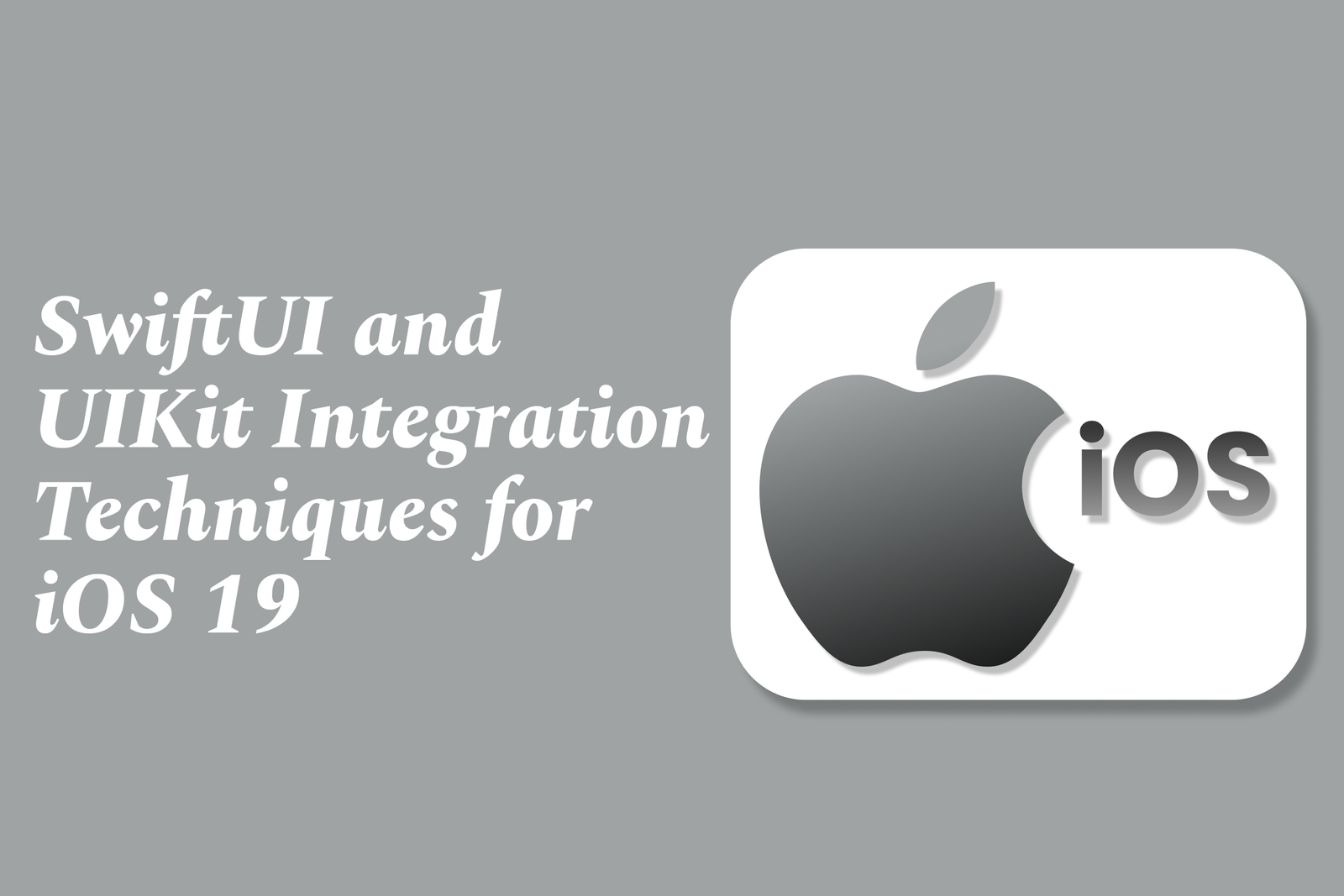SwiftUI and UIKit Integration Techniques for iOS 19
iOS 19 enhances SwiftUI and UIKit integration by allowing seamless embedding of UIKit views in SwiftUI via UIViewRepresentable, and SwiftUI views in UIKit using UIHostingController, enabling smooth communication and shared state for flexible, modern iOS app development.
SwiftUI and UIKit Integration Techniques for iOS 19
1 ) Introduction to SwiftUI and UIKit Integration
SwiftUI provides a modern, declarative syntax for building user interfaces across Apple platforms with minimal code. Despite its power, many developers continue to use UIKit, especially for complex or legacy interfaces, making efficient integration between SwiftUI and UIKit critical. iOS 19 introduces improved techniques to seamlessly blend both frameworks, allowing gradual adoption and harmony in app development.
2 ) Declarative Syntax and SwiftUI Essentials
SwiftUI emphasizes declaring what the UI should display rather than how, simplifying code readability and maintenance. Complex features like animations are easy to implement with minimal lines, with the system handling runtime details such as interaction and state changes. These declarative principles apply equally to combined UIKit components wrapped inside SwiftUI views.
3 ) Using UIViewControllerRepresentable and UIViewRepresentable
A foundational approach to integration is wrapping UIKit views or view controllers within SwiftUI by conforming to `UIViewRepresentable` or `UIViewControllerRepresentable` protocols. This enables embedding existing UIKit components directly into SwiftUI layouts, providing a bridge between the two UI paradigms without complete rewrites.
4 ) Managing Communication Between SwiftUI and UIKit
To ensure seamless user experience, state and data flow between SwiftUI and UIKit parts must be synchronized. Techniques include using SwiftUI’s `@Binding` properties to communicate state changes, leveraging coordinators for delegating UIKit events back to SwiftUI, and updating UIKit components reactively in response to SwiftUI state updates.
5 ) Hosting SwiftUI Views Inside UIKit
The inverse scenario involves embedding SwiftUI views within UIKit interfaces using `UIHostingController`. This is valuable for incrementally introducing SwiftUI features into existing UIKit based apps. Developers can treat SwiftUI views as standard view controllers, managing them with familiar UIKit navigation and lifecycle methods.
6 ) Performance Considerations and Best Practices
iOS 19 enhancements improve the efficiency of rendering and updating integrated views. Developers are encouraged to minimize view hierarchy complexity, reuse hosting controllers, and avoid heavy computations within view update cycles. Proper thread management and avoiding UI updates off the main thread also help maintain smooth animations and responsiveness.
7 ) Handling Dark Mode and Appearance
SwiftUI and UIKit integration also involves consistent app theming. Developers can manage dark and light mode preferences by synchronizing SwiftUI’s environment values with UIKit’s trait collections. This ensures a uniform color scheme and appearance across both frameworks, improving user experience.
8 ) Real World Examples and Tutorials
Apple's updated documentation and developer resources include practical examples showcasing UIKit views wrapped in SwiftUI, custom SwiftUI controls embedded in UIKit, and managing navigation flows across both. These examples help developers understand and implement the integration techniques effectively in their projects.
9 ) Conclusion
iOS 19 offers refined tools and methodologies for SwiftUI and UIKit integration, enabling developers to leverage the strengths of both frameworks. By adopting these techniques, apps can enjoy modern declarative UI features while preserving existing UIKit investments, resulting in flexible, maintainable, and feature rich iOS applications.
https://justacademy.in/news-detail/how-swiftdata-changes-persistent-storage-in-ios-apps
https://justacademy.in/news-detail/react-native-developer-salaries-see-20%-hike-in-2025
https://justacademy.in/news-detail/react-native-0.75-release:-game-changing-features-you-can?t-miss
https://justacademy.in/news-detail/remote-flutter-jobs-in-india-2025
https://justacademy.in/news-detail/apple-developer-program:-2025-changes-explained
Related Posts
Java supports GDPR and data privacy by enabling secure data handling through encryption, controlled access, and precise data management. It allows developers to minimize PII exposure, ensure data confidentiality, and design workflows that comply with data protection regulations effectively.
Java code quality tools have evolved to include advanced static analysis, integrated security checks, and AI-powered code reviews. These updates help developers detect bugs, enforce coding standards, and enhance security, streamlining the development process and improving overall code reliability.
Java remains a cornerstone in big tech companies, evolving with modern features like records, pattern matching, and virtual threads. Its robust ecosystem, enhanced performance, and growing AI integrations keep it vital for both legacy systems and innovative new projects.
Java and CI/CD pipeline optimizations streamline Java application development by automating builds, tests, and deployments. They improve efficiency through parallelization, caching, and secure secrets management, enabling faster feedback loops and more reliable, scalable software delivery.
Java supports modern cryptography standards through its flexible Java Cryptography Architecture (JCA), enabling integration of advanced algorithms like AES, EdDSA, and post-quantum tools. Libraries like Bouncy Castle offer FIPS-certified, hardware-accelerated implementations for secure development.
Java 23 enhances record patterns by enabling concise, direct destructuring of record components within pattern matching, simplifying type checks and data extraction. This improvement boosts code readability and expressiveness by reducing boilerplate in handling immutable data classes.
Java remains a top choice for mobile app backends, powering scalable, secure, and high-performance server-side solutions. Latest trends include cloud-native microservices, reactive programming, and enhanced JVM optimizations, enabling efficient, flexible, and robust mobile backend development.
Java SE 24 and LTS Java SE 21 offer enhanced features and performance, while Apache Spark 4.0.0 introduces Scala 2.13 support and advanced ML and SQL capabilities. Together, they empower developers to build scalable, high-performance data applications with modern tools.
JUnit 5 modernizes Java testing with a modular architecture, improved assertions, and seamless Java 8+ support. Beyond JUnit, tools like Mockito and AssertJ enhance mocking and assertions, creating a powerful, flexible ecosystem for writing clean, efficient Java unit tests.
Java plays a pivotal role in cloud automation tools by providing a robust, platform-independent language used to build scalable automation frameworks like Jenkins and Selenium, enabling efficient CI/CD pipelines, testing, and orchestration across diverse cloud environments.










